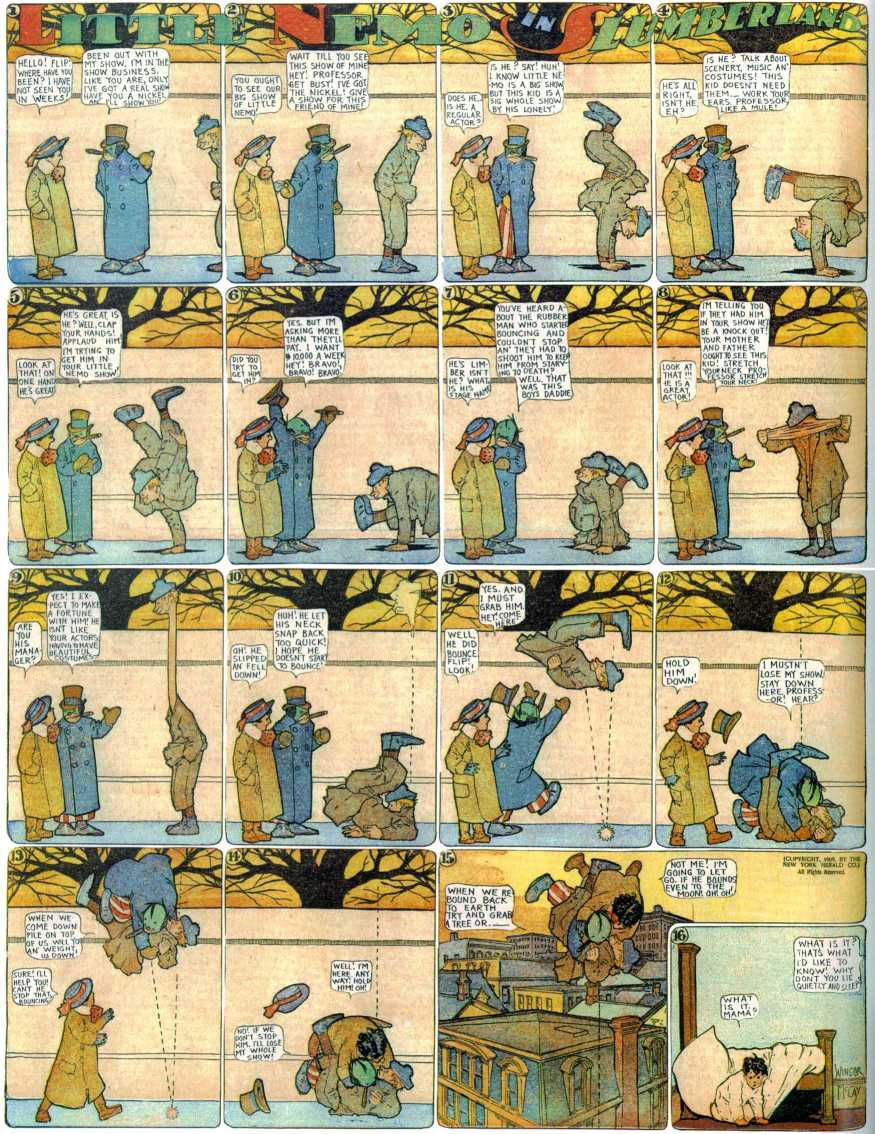Day #170: Little Nemo Meets the Professor
- Zachary J.A. Rondinelli

- Nov 18, 2020
- 3 min read
"Little Nemo in Slumberland" dated January 10, 1909:

Transcript of Tweets by @LittleNemo1905 (NOVEMBER 18, 2020):
This strip is interesting to me because not only is it very formally traditional (spatially speaking), but it is also one of the more wordy comics that McCay has ever included in #LittleNemo. - 1/20
That said, the wordiness seems to function well for what this comic is doing; the pictorial content and the linguistic content are almost at odds with one another, in a battle for attention. - 2/20
They compliment each other, of course (Flip and Nemo discuss both Nemo's show and the Professor's antics while he performs), but where do your eyes go first? What do you "read" first? - 3/20
I'll admit my immediate reaction was almost always to read the image before the text… I wanted to see what amazing feat the Professor would perform next more than I cared about the boys' discussion! - 4/20
This is fascinating to me because it is *not* my go-to approach to reading comics. When there is text, I almost always actively read it first. - 5/20
This is largely because I've already scanned the panel content by virtue of seeing the page, which allows me an entry point where I can make initial meaning from viewing the image and reading the text before renegotiating/solidifying my meaning by close reading the image. - 6/20
My entire reading process was flipped in this case because it was responding to the comic itself. I enjoy when this happens because it makes me acutely aware of my process. - 7/20
The text is largely centered on promoting the Victor Herbert operetta version of #LittleNemo (see strip #162 from November 5, 1908 for another example), but this time we see our Flip (and not the poster cut-out) discussing it. - 8/20
It would seem as though Flip is a little jealous of Nemo's success and is trying to recreate it, himself… or (more accurately) get in on it himself and take home a piece of it's success by getting the Professor involved! - 9/20
For his part, the Professor (a contortionist) seems a strange fit for the operetta, which may very well be the point. - 10/20
I like the dichotomy that bringing the contortionist into this strip represents in relation to McCay performative past. - 11/20
We've talked before about McCay's love for the Circus and the Sideshow; two places that a contortionist would certainly feel at home in the early 1900s. - 12/20
By contrast, Victor Herbert's operetta represents McCay's involvement in distinctly "high-brow" society fair of which opera and operetta undoubtedly belonged. - 13/20
Flip's attempts to bring the contortionist (symbolic of McCay's interests in "low culture") into Nemo's operetta (McCay's position within "high culture") is bound to fail… which it does it glorious fashion here. - 14/20
As the contortionist begins to bounce, neither Flip nor Nemo can stop his increasingly high bounces! Tiers 3 and 4 are just wonderfully fun and feature more experimental motion lines, which I enjoy. - 15/20
I really like panel 10, in particular, which I read as a sort of proto-embedded closure (see Gavaler & Beavers, 2018) where the faint ghost of the Professor's head was pre-snap guides our eyes downward. - 16/20
It's as if the "snap" is initiated (or at least realized) by our reading the downward motion. - 17/20
Sure, it's a bit clunky; I initially had no idea what I was looking at to be honest… but once you take some time to figure it out, I think it works surprisingly well. - 18/20
For what looks, at first glance, to be a simplistic and traditional strip, this comic presents some deceivingly complex nuances. - 19/20
This is my reading of "Little Nemo in Slumberland" #170. What's yours? - 20/20





Comments